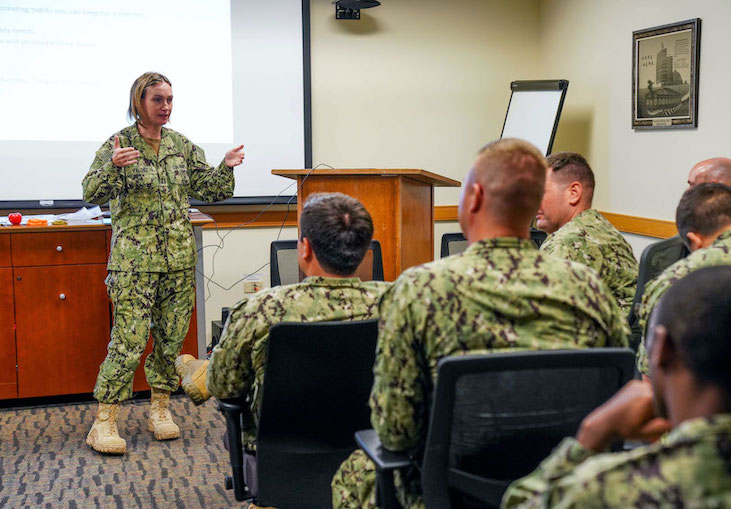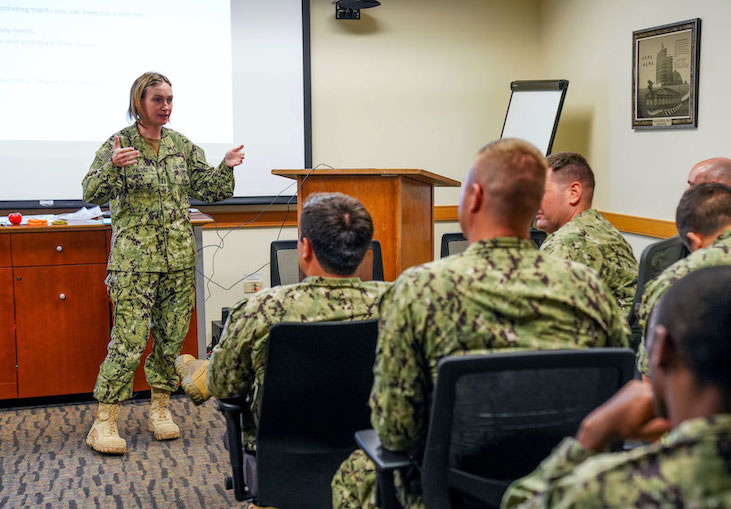After you’ve outlined an action plan to target a specific venue on your installation or ship, it’s critical to communicate with all involved stakeholders. This includes your direct leadership and leadership at related health council meetings or working groups such as the Commander’s Ready and Resilience Council (Army), Community Action Board (Air Force), or Marine Corps Community Services (MCCS) Health Promotion. Leadership engagement is key as they can support financial and other resources, open networks for collaboration, and enlist others to assist with your efforts. Also, leaders are essential for long-term success and sustainability of nutrition environment interventions.
 There are many things to keep in mind when you prepare and deliver communication to your local leadership.
There are many things to keep in mind when you prepare and deliver communication to your local leadership.
- Know your audience to target your message. What are their priorities, goals, and potential barriers? What has or hasn’t worked in this setting and why?
- Consider partnerships or initiatives that are already in place. How can your team leverage existing initiatives or partnerships to reduce duplication of efforts and maximize resources? How does your proposed action plan align with installation, Service, or DoD initiatives (for example, Go for Green®, Army Holistic Health and Fitness (H2F), or Air Force Health & Readiness Optimization strategy)?
- Determine the best platform to communicate. How and where will you update your leadership? Which format is preferred for updates (presentation or slide deck, written briefs, or email)?
- Build your communication. Which pictures and graphics do you have to include in your communication (for example, mNEAT app Report graphic or photos taken during the mNEAT process)? Did you communicate with food service operators or other key stakeholders before presenting to a broader audience to support awareness, transparency, and collaboration?
- Deliver your message. Did you include the what, when, where, why, and how? Did you offer a clear, planned course of action or request? What’s the “so what”? Provide the facts of what the results show and avoid criticizing stakeholders. Highlight any positive working relationships your team has with food service operators.
What kind of resources do you need to better assist communication about mNEAT action plans and progress with your leadership? Let CHAMP’s MNE team know at mneat@usuhs.edu.
